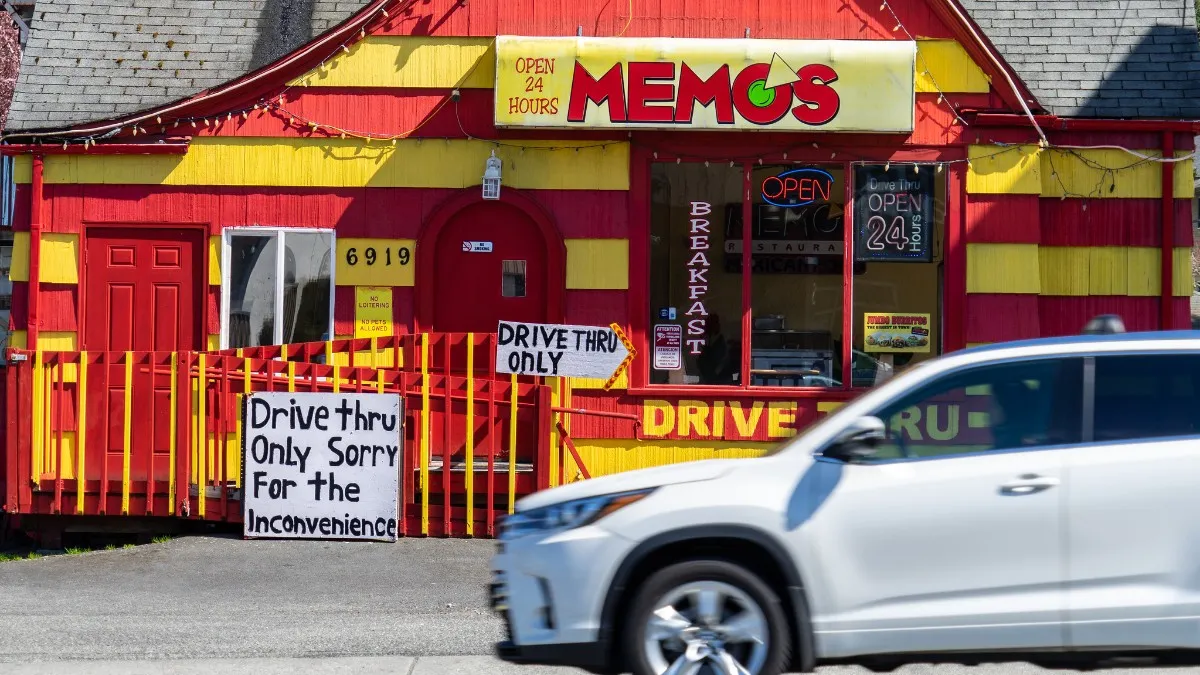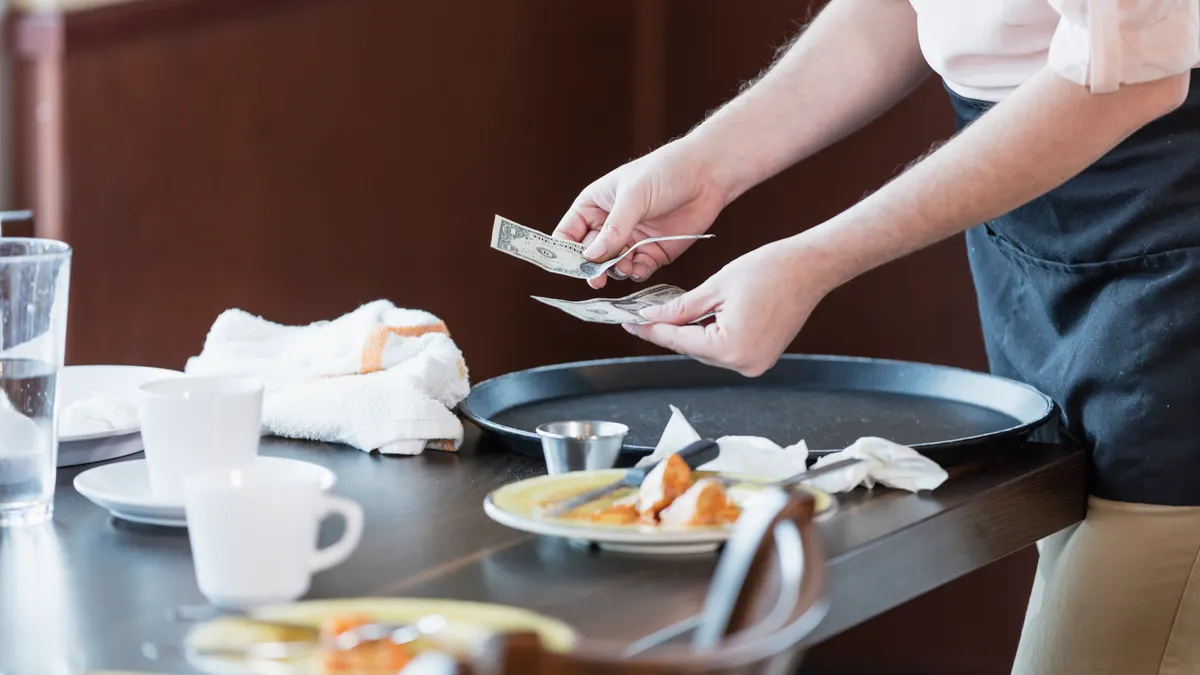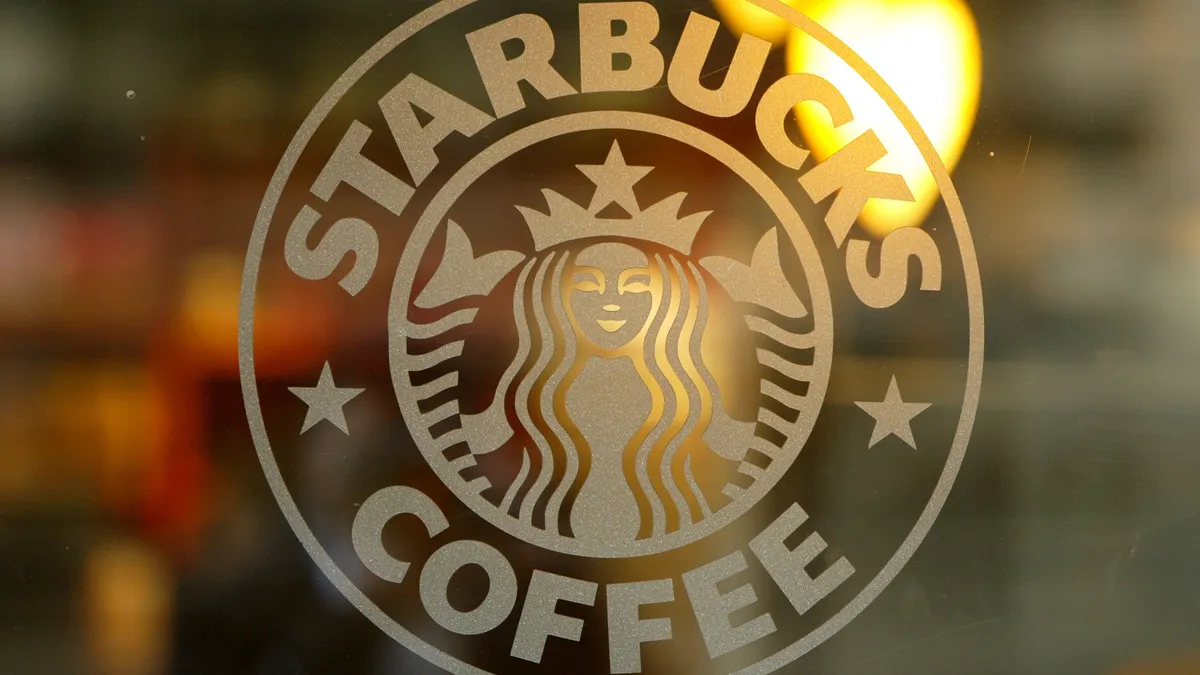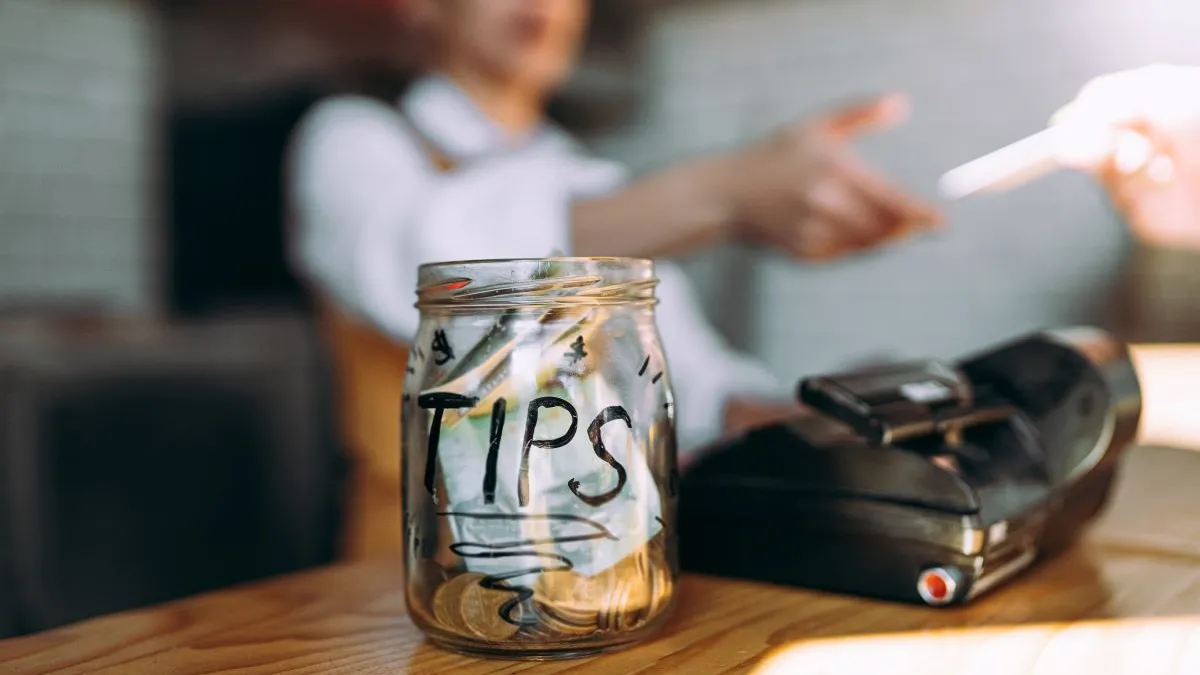UPDATE: April 27, 2020: President Donald Trump signed a $484 billion coronavirus relief bill into law on Friday, which will add $310 billion in federal aid to the Paycheck Protection Program funding. The Small Business Association on Monday resumed accepting applications for PPP loans, and restaurants that already applied can also be considered by qualified lenders.
UPDATE: April 24, 2020: The House passed a $484 billion bill Thursday, which the Senate approved Tuesday, that will add $310 billion in federal aid for the next round of Payment Protection Program funding.
It’s been almost a week since the Paycheck Protection Program funding, a $350 billion federal loan program designed for small businesses, ran dry.
Now, Congress is close to approving PPP’s next round of aid. The Senate passed a $484 billion deal on Tuesday that would boost PPP funding by $310 billion, and the House is expected to pass the package on Thursday. The promise of more government cash is a glimmer of hope for many industries, but restaurant experts worry these loans will hurt — not help — restaurants if serious revisions aren’t made.
In an April survey conducted after PPP became accessible, 28% of restaurants in cities with mandated dining room closures said they don’t expect to survive more than a month, Independent Restaurant Coalition co-founder Tom Colicchio said during a media call with the James Beard Foundation last week. In a March survey before PPP launched, only 17% of restaurants feared they would go under if temporary closures lasted for 30 days.
“The fact that restaurant owners are now more fearful of losing their likelihoods than before PPP opened shows just how futile the program has been in helping the industry,” Colicchio said. “The message right now is we need to save this industry and PPP is not going to do it.”
The problem is bigger than a lack of resources to go around, experts say, though there has been backlash over the fact that major chains like Potbelly, Ruth’s Chris Steakhouse and Shake Shack — which just pledged to return its $10 million in funding — scored multi-million dollar safety nets while thousands of independent restaurateurs are waiting to hear back.
"The fact that restaurant owners are now more fearful of losing their likelihoods than before PPP opened shows just how futile the program has been in helping the industry."

Tom Colicchio
Co-founder, Independent Restaurant Coalition
“Most of these restaurants that our survey found need $50,000 or less to stay open, and they are competing and swimming upstream against an enormous, sophisticated lobby for all of small business,” Clare Reichenbach, CEO of the James Beard Foundation, said on the media call last week.
Treasury Secretary Steve Mnuchin said that larger companies would not be able to access new PPP funding on Tuesday, but did not provide details, reports The Washington Post. President Donald Trump also said Tuesday that he would ask large businesses to return the funds they received, and the Treasury Department will issue new guidance on which businesses can qualify for PPP loans.
“We have over a million companies that have received this with less than 10 workers. There is very broad participation in really small business. I will comment there have been some big businesses that have taken these loans. I was pleased to see that Shake Shack returned the money,” Mnuchin said during the Tuesday briefing. “The intent of this was not for big public companies that have access to capital.”
There is also concern about the program’s ambiguity. For example, language in the Coronavirus Aid, Relief and Economic Security Act has some worried that if businesses take out a PPP loan, they will no longer be eligible for the CARES tax benefit.
But the core issue is that PPP’s conditions are at odds with restaurants’ unique vulnerabilities — to the point that restaurants that were able to receive PPP funding are too afraid to cash in on their loans, Sean Kennedy, EVP of public affairs at the National Restaurant Association, told Restaurant Dive.
“Restaurants are looking to find a way to make PPP work, but a lot of them are concluding that they don’t think it’s for them,” he said. “If they get it wrong, they’re suddenly on the hook for yet another loan. And what restaurants really don’t need right now is more debt on their books.”
PPP’s terms work against restaurant needs
More than 55% of independent restaurants have already taken more than $50,000 in new debt obligations to survive the impact of COVID-19, according to James Beard Foundation data. PPP’s eight-week loans are completely forgivable so long as restaurants put 75% of the funds toward payroll during that period — and all remaining funds must be spent in this timeframe as well — but this stipulation is what makes it a dangerous proposition for restaurants, Kennedy said.
Because store closures have forced restaurants to pare down their teams to skeleton crews for takeout and delivery, the majority of restaurants don’t have positions that need to be filled at present. And because the eight-week PPP time period begins 10 days after the loan has been awarded, restaurants aren’t able to delay and use the funding when they are allowed to reopen dining rooms and bring staff back on.
“We need flexibility so that restaurant owners can start using those funds when they’re ramping back up, given the all clear from the health department and can start filling tables again,” Kennedy said. “That’s when restaurants are going to be most vulnerable.”
Both the NRA and ICR are pushing Congress for both more flexibility around the start time of the eight-week period, as well as an extension of the payback period if the loan isn’t forgiven. Congress initially devised 10-year PPP loan terms, but the Treasury changed the deadline to a two-year period — one of many alterations the industry has bemoaned as confusing and unattainable, as restaurants are predicted to be struggling for years to come because of COVID-19’s aftermath.
“I think some people that went into the loan process very early on filled out a form and thought they were done,” Dirk Izzo, SVP of NCR Hospitality Group, told Restaurant Dive. “But there were updates on the information [the government] asked for… there is noise in the system.” He said that the “government came back multiple times with new questions and new regulations.”
"We need flexibility so that restaurant owners can start using those funds when they're ramping back up, given the all clear from the health department and can start filling tables again. That’s when restaurants are going to be most vulnerable."

Sean Kennedy
EVP of Public Affairs, National Restaurant Association
PPP’s requirements for how funds are used also don’t recognize that restaurants’ biggest pain points right now are paying rent, utilities and insurance, experts agreed.
“The average restaurant has about 16 days of cash on hand and makes about 5% profit… and we’re [past] the first month of [closures],” Kennedy said. “Restaurant owners… are looking at their balance sheet, which has got marginal revenue coming in, and what they don’t need is assistance on payroll from the federal government. We need assistance on many more of the fixed costs. We’re gonna definitely need assistance on payroll when we come back online, but we don’t know when that’s going to be and we need a loan that reflects that.”
Employees may also choose to stick with unemployment rather than return to their restaurant jobs out of fear that they will be laid off or furloughed again as soon as loan funds run out, Colicchio said. That’s why shifting the loan’s date of origin to a restaurant’s reopening is crucial.
“What I’m hearing from my employees is they want to come back to work, but they understand how PPP works. And so they’re saying ‘Well, if I come back now, in two months we’re not going to be open and I’ll be back on unemployment. So I’m not going to take that risk,’” Colicchio said.
Banks are unprepared for this level of borrower demand
If restaurants are willing to take on the risk that PPP loans pose to their business, there is another significant obstacle to scale: navigating the application process.
“The frustration is the Treasury has changed the program with the SBA a number of times… so we’ve had to change forms, we’ve had to change requirements, and it’s an automated [application] process so we have to go through the whole process to make sure that everything we’re doing from an accounting perspective is okay,” Christopher George, a former banker and SVP of client strategy at NYMBUS, a fintech, told Restaurant Dive.
Demand for PPP loans is also overwhelming the U.S. banking system, which isn’t technologically prepared to process so much funding online and at home during mandated social distancing because most still aren’t cloud-based, George said.
“We’re getting thousands and thousands of applications, and [no bank] has a call center that is capable of handling all of those questions,” George said. “One person could go on for 10 minutes, and you get thousands of people with questions. The challenge has been the documents because a lot of borrowers don’t understand what they need to give us.”
To streamline this process, NYMBUS and NCR Hospitality Group partnered to create a portal that automates and expedites the application process by connecting small restaurants with small banks, acting as a digital bridge. They also created an FAQ page to help potential borrowers understand PPP’s requirements, including a borrowing maximum of 2.5 times average monthly payroll costs or $10 million, whichever is less, and reduced loan forgiveness if restaurants reduce staff. There’s also information on which documents are needed to apply, how forgiveness is calculated and more.
The SBA’s system also crashed a lot during the first round of PPP funding due to overwhelming demand, George said, and it took two to three days for some banks just to get loan authorization.
“[SBA] wasn’t set up for this,” George said. “They tried to process more loans in a few weeks than they do in a year.”
The Senate’s latest bill would put $60 billion toward small banks, credit unions and community-based lenders to aid small businesses who don’t have relationships with major banks and have $50 billion or less in assets. This could better prepare lenders for round two. Many banks have continued to accept applications, which should help them ramp up quickly when funding is available. During the first round of PPP, small banks, in particular, experienced a lot of traffic — nearly 20% of funds were processed by lenders with less than $1 billion in assets, and nearly 60% from banks with $10 billion or less in assets.
Both local community banks and major banks still have unique problems that make applying for a PPP loan difficult, George said.
“Your local community bank is not prepared… to be an SBA lender, not prepared to give responses back to customers — they don’t have the manpower,” George said. “They’re in flux because of the fact that a lot of them are working from home. Only their drive-thru is open. They don’t let people into their lobbies. They’re behind digitally.”
Small banks may also be fearful of offering PPP loans because traditional SBA loans are so strict, and they may worry that they won’t get their money back, George said.
"We're getting thousands and thousands of applications, and [no bank] has a call center that is capable of handling all of those questions."

Christopher George
SVP of Client Strategy , NYMBUS
But if a restaurant tries to apply at a major lender, they may not be prioritized because of their small size, especially if they aren’t members of that institution, George said. There’s also risk that a major bank will max out on PPP lending before it can address all of its applications. Demand is so high, for example, that the Federal Reserve altered the asset cap placed on Wells Fargo — which was implemented after the bank’s fake accounts scandal — to help process the deluge of loan requests.
“I applied, and I still haven't heard back,” Naomi Pomeroy, chef at Oregon-based Beast and co-founder of ICR, said on the media call. “A lot of people missed that first round of funding,”
Subway franchisee Bob Grewal told Restaurant Dive that only 8% of his 1,800-operator network received funding.
Picking the right bank or fintech portal is key, too, because a restaurant can only apply for a PPP loan at one bank — it can’t pursue multiple lenders for multiple sums.
Some fintechs have gained direct lender status ahead of the second round, which could give restaurant borrowers more options.
"[Fintechs] are ready to get these loans out there. They're talking about loans that are under $50,000, so the smallest operators who haven't had access to any of this," John Pitts, policy head for Plaid, told Banking Dive. "The type of fintech that's out there that thinks they can originate 1 million loans in two days to really small mom-and-pops should have every bit of support as any bank to make sure they can fully participate."
The banking industry predicts the second round of aid could be drained in only a few days.
"This is going to go within, at most, 72 hours," Consumer Bankers Association President Richard Hunt told Politico in an interview. "But the odds are more like 48 hours.
Even if independent restaurants can get approved and receive their funding before a second round of PPP funding is used up, the money won’t reverse the crippling rate of restaurant closures without new policies.
“We have to do these fixes, or else it's just not going to be effective. There's nothing for us to do with money that we're forced to use right now when our restaurants aren't even open,” Pomeroy said.





















